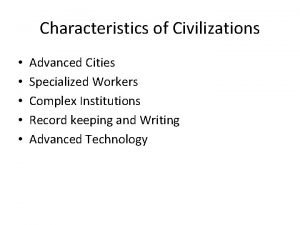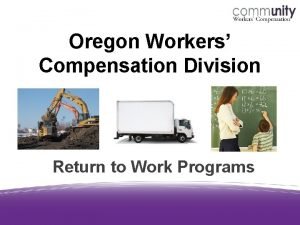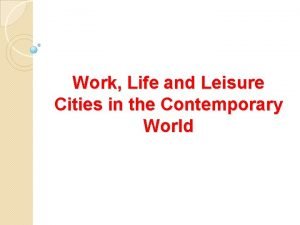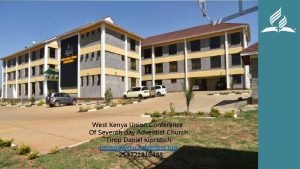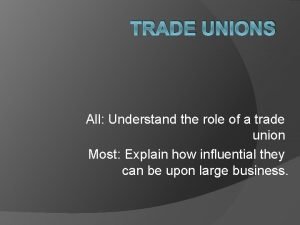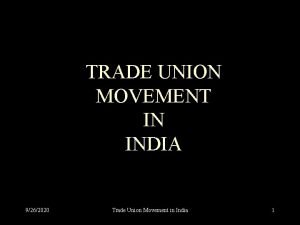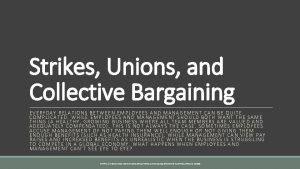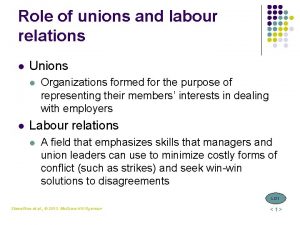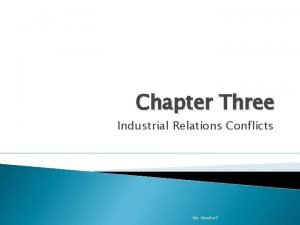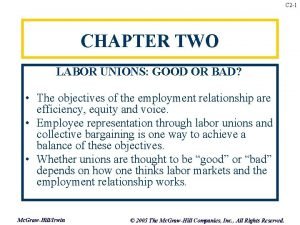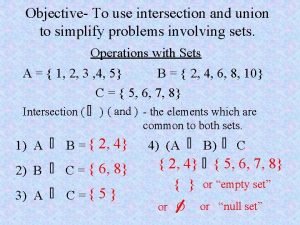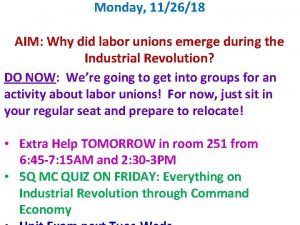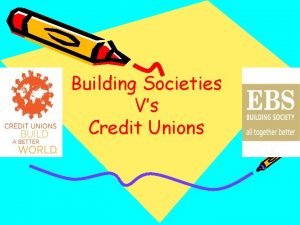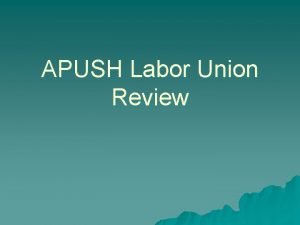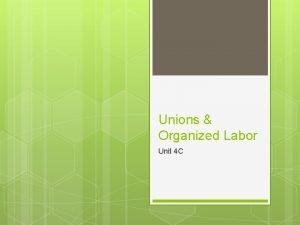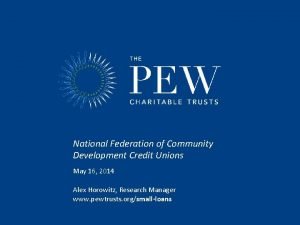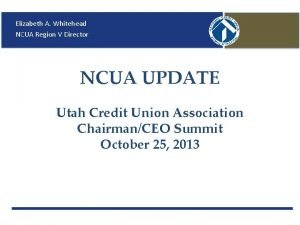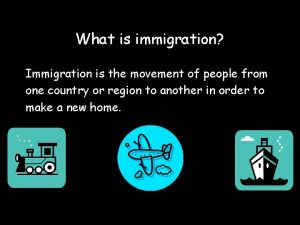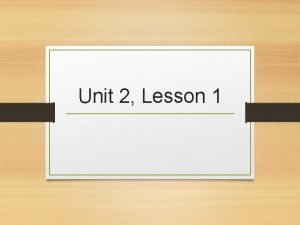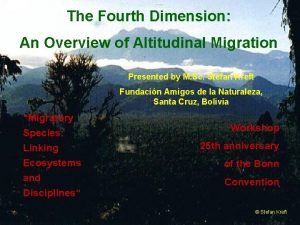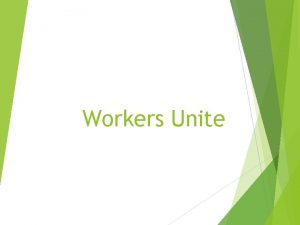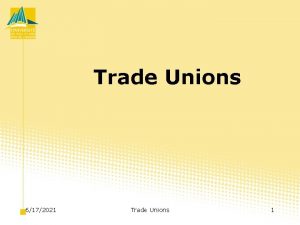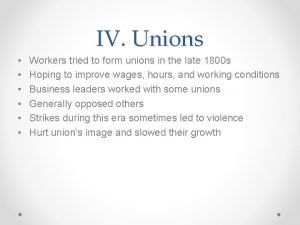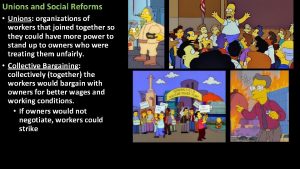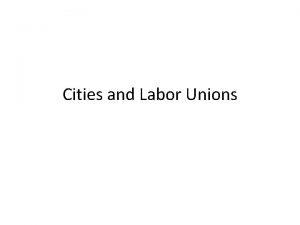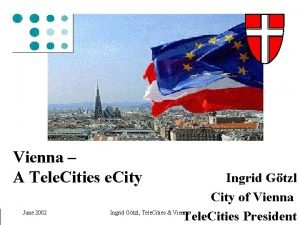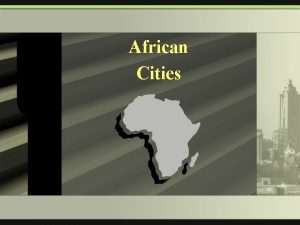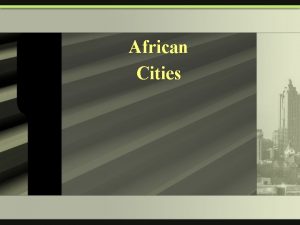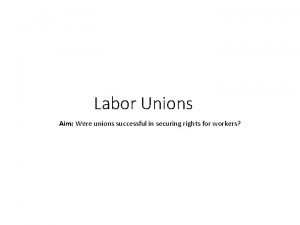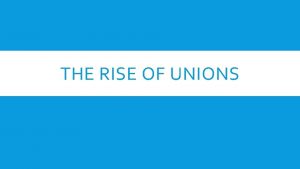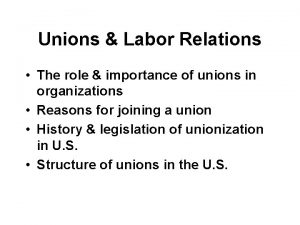Workers Unions Cities Immigration Workers Work Division of





























- Slides: 29

Workers, Unions, Cities Immigration

Workers & Work • Division of labor changed the way things were made in factories. No single person could make a product alone. The division of labor was called specialization. The division of labor increased the amount a worker could produce. • • • - More products = lower prices Usually higher wages were paid , allowing people to buy more.

• The plants were run very efficiently without taking into account the human side of production. - • • Breaks were few & work was monotonous Sometimes guards patrolled to keep people from talking These & other more horrible working conditions would eventually lead to unionization. Keep in mind there are no government social services to help people who have been injured on the job or to help widows whose husbands were killed on the job.

Union • A union is a group for employees. • Its purpose is to improve working conditions. • Collective bargaining = negotiating with the managers/owners for better conditions. • Strike: not working until demands are met by owners

UNIONIZATION • Workers joined unions to counter-balance the power of the large corporations. • A union is a group for workers to help them negotiate for better conditions at work. • This is known as collective bargaining. • One of the first unions was the Knights of Labor (1869) – Secret organization at first; they feared retaliation from business owners. – Allowed blacks, women, immigrants & unskilled workers to join.

• Goals of the Knights of Labor – 8 hour work day – Strict regulation of trusts – Equal pay for men & women – Outlaw child labor • The Knights became very popular until the Haymarket Bombing. – There was a strike at the Mc. Cormick Harvester Machine Company.

- Police tried to break up the strike which was organized by some radical unionists. - Someone threw a bomb that killed 7 cops. - The Knights were accused of this crime & public opinion turned against them. • The Knights lost members & finally dissolved in 1917. • By 1886, a number of craft unions would establish the American Federation of Labor (AFL)

– The AFL was led by Samuel Gompers. – Membership was exclusive to skilled workers (painters, plumbers, bricklayers, etc. ) – Concentrated on bread-&-butter issues: 1. higher wages, 2. shorter hours, 3. better working conditions. – B&B issues are those that most closely affect the workers. • Employers would try to stop the spread of unions by using the yellow dog contract & blacklisting.

• Yellow dog contract: agreement between the employer & the employee that the employee would not join a union. • Blacklist: a list of union members who would be denied work. • One of the most violent strikes in American history was the Homestead Strike in Homestead , PA. - Iron & steel workers called a strike to protest reduced wages. - The company retaliated with a lockout & used scabs.

• A lockout is when the company locks out striking workers from the plant. • Scabs are workers who cross the picket line to take the jobs of the workers.

- The scabs were protected by private police from the Pinkerton Agency. - A small-scale battle broke out at the waterfront between the strikers & the Pinkertons. (7 Ps & 9 Ss died) - The strike lasted 4 months & eventually the union had to give in to the company’s demands. - The workers went back to work but at reduced wages. . • The power of the unions would come & go during American history. • The unions have done important things for American workers.

THE GROWTH OF CITIES • Massive amounts of immigrants would come to America between 1860 & 1900. • Most of the immigrants came to find work & better opportunities in the growing industrial areas of the country.

OLD Immigrants Pre-1880 (AKA Old Immigrants) 1. Spoke English 2. Western & northern Europe 3. Educated & skilled 4. Money 5. Protestant

NEW Immigrants After 1880 (AKA New Immigrants) 1. Spoke very little or no English 2. Mostly uneducated & unskilled 3. Poor 4. Catholic , Jewish , or Orthodox 5. Southern & Eastern Europe or Asia • These immigrants ended up with the lowest paying jobs & in the worst possible living conditions.

• They tended to live together as a community & began the ethnic neighborhoods in cities. -Little Italy, Irish Channel (NOLA), Chinatown, Germantown, etc. • The waves of new immigrants were resented by many native born Americans. (Nativists) -The New Immigrants would work long hours for low pay. -They could also weaken the political power of the old established families & the unions.

• The old established powers started antiimmigration organizations & urged Congress to pass national legislation restricting immigration. - One such type of legislation was the Literacy Test: immigrants had to prove they could read & write English before they were allowed in the country. - Most of the legislation didn’t become law because of the influence of big business. - Businesses saw the new immigrants as a huge source of cheap labor.

• Congress did pass the Chinese Exclusion Act in 1882. -- It prohibited Chinese from entering the country for 10 years. --This legislation would stay in effect until 1965. --The problem was on the West Coast where the Chinese resisted assimilation & were a threat to the people of the West Coast.

• Assimilation: blending in with the rest of the people ; leaving behind ethnic identity to be like the majority. • Assimilation was encouraged because it was a way of advancing in society. It was considered “bad” to show your ethnic differences. • The majority of immigrants ended up in the urban areas of the country. • They felt safer in the cities where they could live among people of their own people.

PROBLEMS OF CITY LIFE • After the civil war , many people left the rural areas for better opportunities in cities. • Some places that were just small towns boomed between 1870 & 1900. -Birmingham, AL -Denver, CO -Memphis, TN -Seattle, WA -Portland, OR -Atlanta, GA -Pittsburgh, PA -San Francisco, CA • The cities grew faster than housing & other facilities could be provided for the inhabitants.

-Real estate values skyrocketed. -Tenement slums became the norm. • Problems facing cities included 1. crowded tenement buildings 2. inadequate police & fire protection 3. no garbage or sewer services 4. public water supply was impure ***Life for the poor was horrible no matter which city they were living in during this time period. • There were some people who tried to improve the living conditions for the poor.

-Cities created boards of health -Social workers created settlement houses, which were community centers that helped the people of the neighborhood. The most famous of these settlement houses was started by Jane Addams. ***Hull House in Chicago became the model for many other settlement houses (Jane Addams. ) • Transportation was also a problem that many urban areas tackled during the late 1800 s. -Horse drawn street cars eventually gave way to electric trolleys (by 1880) -Cable cars were installed in San Francisco (variation on a theme. )

-Bridges & roads were built to improve traffic flow in the cities (Brooklyn Bridge in NYC. ) • Many cities used the prosperity of industrial expansion to improve the lives of the inhabitants. – City parks were built to give people a “country” setting in which to relax & socialize. – Grand public buildings were built to impress visitors. – Tourism became important for the middle & upper classes. – Art museums & other cultural activities were started.

• The industrial expansion of the late 1800 s would improve the lives of many, but it would also leave huge gaps between the poor & the wealthy. • This industrial expansion would lay the groundwork for our lives today.






 Lesson 5 a nation of cities
Lesson 5 a nation of cities Example of advanced cities
Example of advanced cities Oregon workers compensation division
Oregon workers compensation division Work life and leisure cities in the contemporary world
Work life and leisure cities in the contemporary world Western kenya union conference of sda
Western kenya union conference of sda Advantages and disadvantages of unions for employees
Advantages and disadvantages of unions for employees Role of trade unions in the economy of a country
Role of trade unions in the economy of a country Benefits of trade unions
Benefits of trade unions Strikes unions and collective bargaining
Strikes unions and collective bargaining Types of unions
Types of unions Erm implementation roadmap
Erm implementation roadmap Benefits of trade unions
Benefits of trade unions What are unions
What are unions Simplifying unions and intersections
Simplifying unions and intersections Why did labor unions emerge
Why did labor unions emerge Credit unions are for-profit organizations. true false
Credit unions are for-profit organizations. true false Disadvantages of building societies
Disadvantages of building societies Knights of labor apush
Knights of labor apush Why do employees join unions
Why do employees join unions Pros and cons of unions
Pros and cons of unions National federation of community development credit unions
National federation of community development credit unions Ncua aires questionnaire
Ncua aires questionnaire 369 times 2
369 times 2 Division of polynomials
Division of polynomials Division terms
Division terms Synthetic diviison
Synthetic diviison Pull factors of canada
Pull factors of canada What is immigration
What is immigration How did esperanza help marta during an immigration sweep
How did esperanza help marta during an immigration sweep Fourth dimension immigration
Fourth dimension immigration

